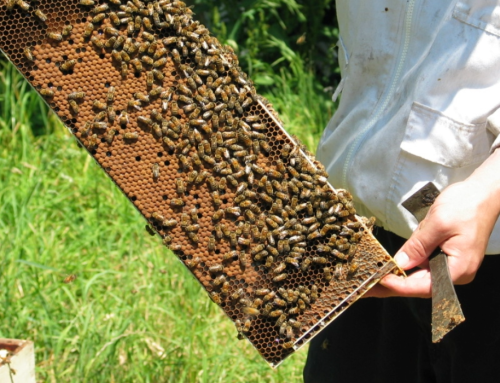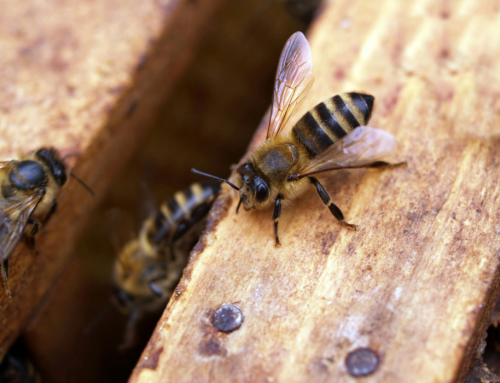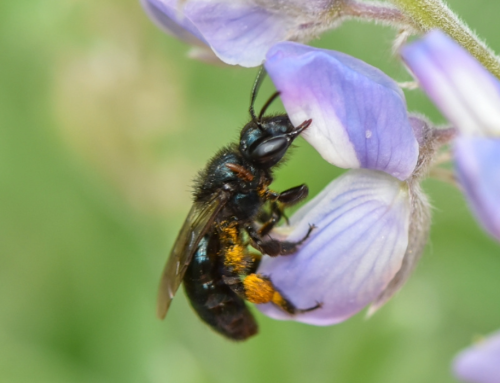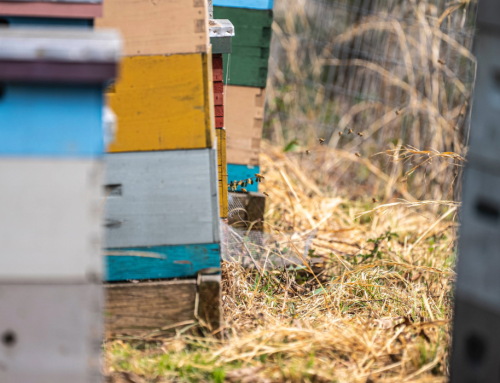Barbara Forster-Rickard is a hobby beekeeper with hives in East Vancouver and at Glimpse Lake, Nicola Plateau. Beekeepers in BC frequently import nucs, packages, and queens from regions such as New Zealand, Hawaii and Chile, where the climate differs significantly from BC’s. Although these imported queens may thrive for a while, they often fail to survive the winter, as they aren’t suited to BC’s environment. Additionally, in North America local honeybee queens tend to have fewer pathogens and greater productivity than transplanted queens. Recognizing the benefits of developing local queen bees for her hives and the local beekeeping community, Barbara set out to learn alternative methods of queen rearing, moving away from splitting hives to increase her queen population. Her goal was to raise enough queens to share them with members of the Kamloops, Merritt and Richmond Beekeepers Associations and inspire other small hobby beekeepers to raise their own local queens.
Grafting begins with selecting a breeder queen, one that has survived two winters and is laying a strong brood pattern. Worker bee larvae are then carefully transferred from natural honeycomb cells into artificial cups designed to mimic queen cells. This prompts the young bees in a prepared cell builder colony to raise the larvae as new queen bees. With funding from the Bee BC Program, Barbara purchased equipment essential for grafting including queen cages, grafting tools, frames and covers. With this equipment and the help of mentors from beekeeping associations across BC, Barbara successfully completed three rounds of grafting to rear queens.
As a result of utilizing this new method and tools, Barbara was able to successfully expand her beeyard at Glimpse Lake, which had experienced significant winter losses in 2023/24, from 5 surviving colonies to 16. By December 30, 2024, all 16 colonies were still alive. Along the way, she learned several valuable lessons: timing is crucial for queen-rearing, ensuring sufficient mating nucs and frames of capped brood is essential, and having proper lighting and lenses for grafting improves accuracy and ease.

Barbara achieved her goal of sharing queens with fellow beekeepers in the Richmond and Merritt Associations, and a nuc with a new queen raised through the project to a beekeeper in Kamloops. Not only did the Bee BC program enable Barbara to learn a new skill to increase the health of her hives, but it also enabled knowledge transfer to the broader BC beekeeping community.
“I am encouraged to continue raising queens with the equipment I was able to get through the Bee BC Program this beekeeping season and to continue giving queens to fellow beekeepers”.










